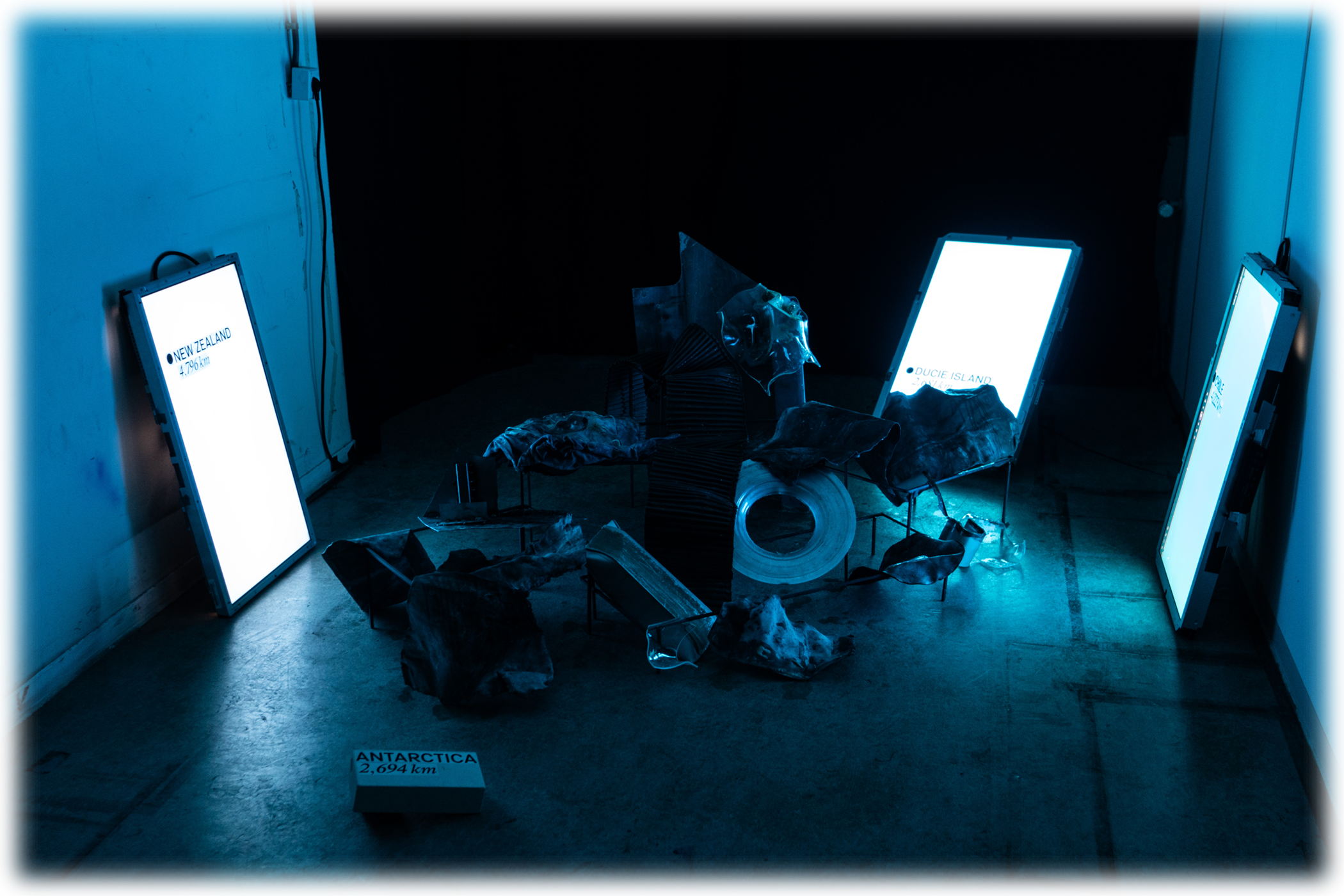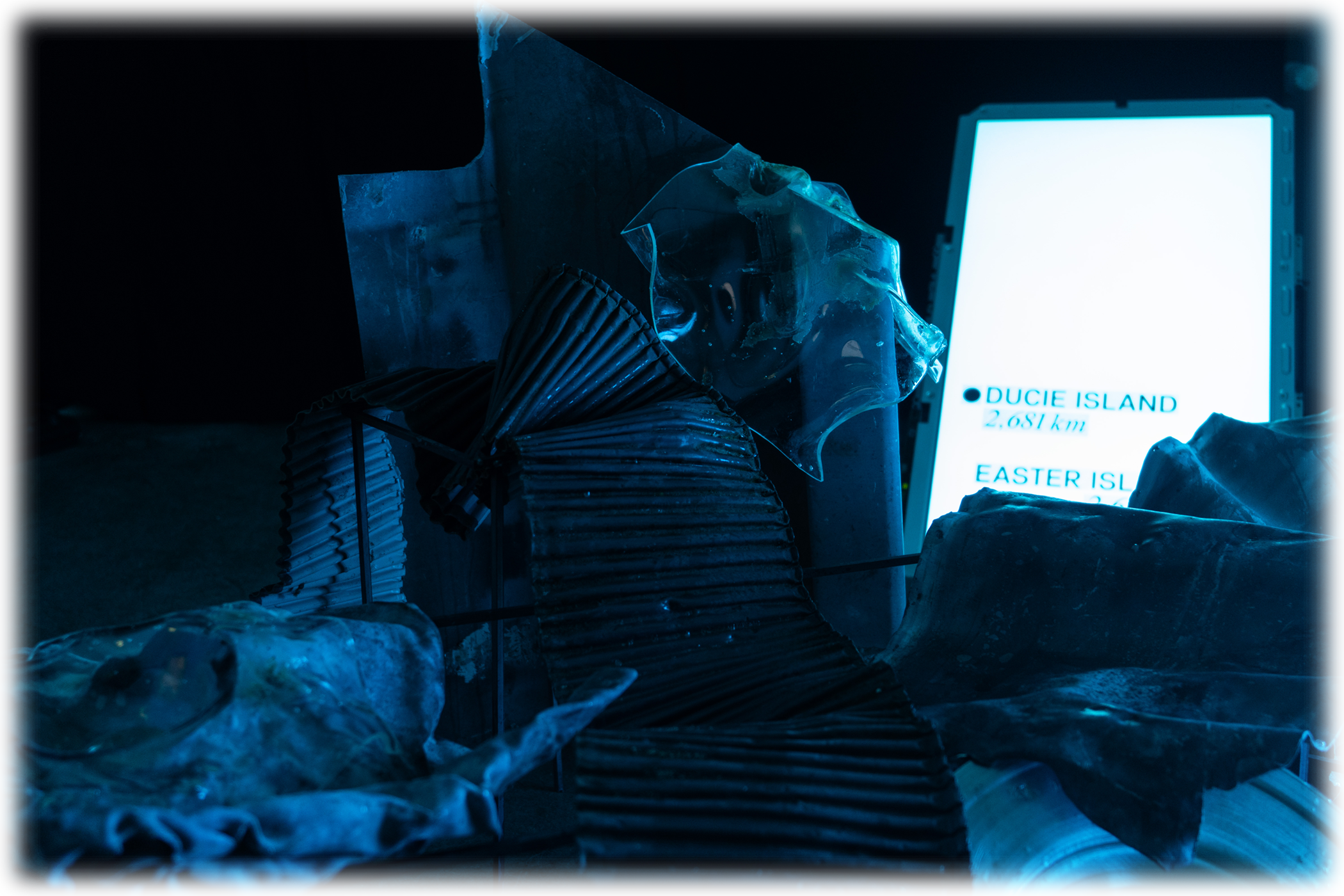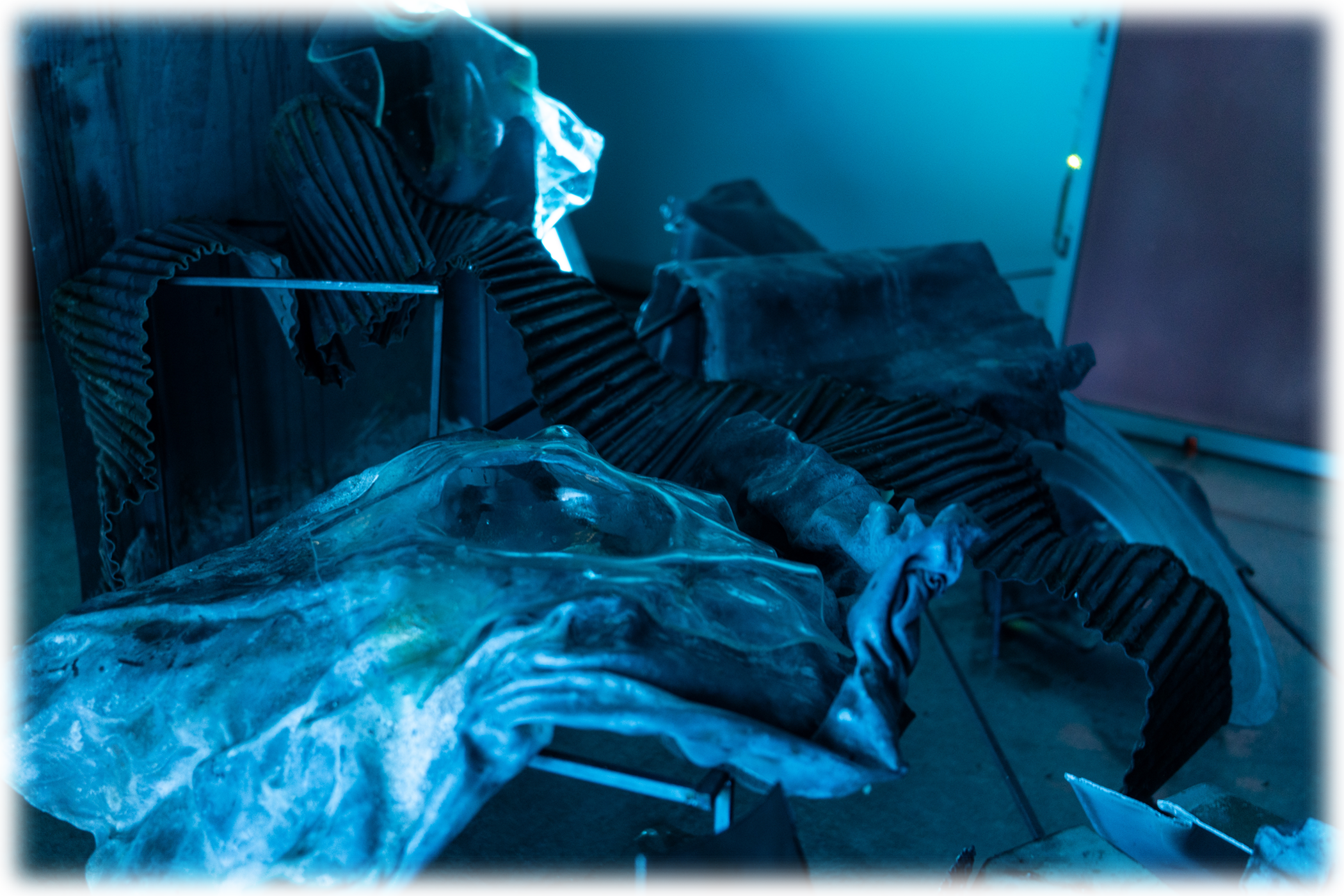Project Nemo — Out of sight, out of mind
Eva Filipczak, Vincenzo Lapiccirella, Lili Harather




In the middle of the South Pacific, where no landmass can be found, lies Point Nemo, also known as the Pacific’s pole of inaccessibility. This point in the ocean was only mathematically calculated by Hrvoje Lukatela in 1992 and not physically discovered. At an approximate distance of 2,700 kilometres from any land, and thus from human civilization, it is one of the most remote places on earth - the people closest to Point Nemo are the astronauts in the International Space Station orbiting 400 metres above the Earth.
With a depth of 4,000 metres, more than 260 decommissioned, high-risk spacecrafts and hundreds of outdated satellites have met their end at this location since 1971. And in 2030 it will also become the resting place of the ISS. While competing in the Space Race, Russia, Europe, Japan, and the US communally appointed Point Nemo as their spacecraft cemetery without actually claiming it as a territory.


Governed by both the Freedom of the High Sea and Space law, which provides no clear regulations on how to deal with marine pollution caused by space waste, Point Nemo is a place beyond jurisdiction.
The aim of this research is to unpack the logics and power dynamics that have sedimented in the unexplored seafloor of this incredibly isolated place, questioning the impacts of the human thirst for knowledge – and how the thirst for outer-planetary conquest impacts the undiscovered depths of our planetary bodies of water.

Through a conversational piece of contemplation, that speaks not only through facts but also through the materials that compose it, these aforementioned logics of power are interrogated. With this installation, our goal is to animate thoughts about the repercussions of metallic corpses being thrown into a body of water. How can we shift our terracentric perspective and relate differently to aquatic bodies?